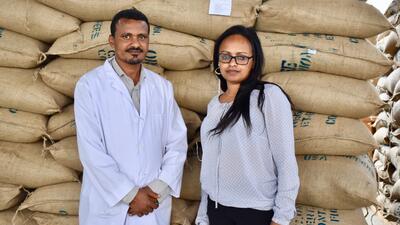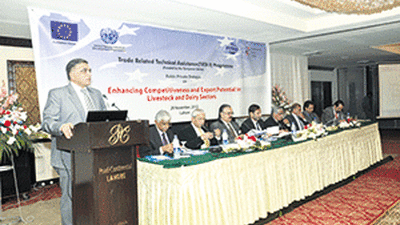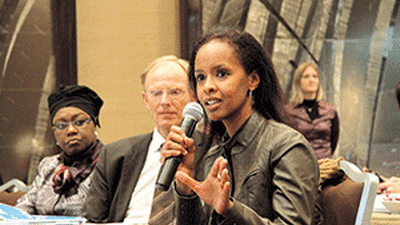The league of Arab States: A regional perspective
ITC analysis shows that by reducing obstacles to trade, there is potential to increase the total trade of member states by 10% and create at least two million jobs. Members of the League have signed a number of trade agreements on preferential market access, most notably creating the Greater Arab Free Trade Area (GAFTA) that comprises all League members except Comoros, Djibouti, Mauritania and Somalia. Within GAFTA, the six Gulf countries of the Gulf Cooperation Council and Egypt, Jordan, Morocco and Tunisia are party to the Agadir agreement establishing a Mediterranean free trade area. At the same time, a number of bilateral agreements between Arab states, most of which were implemented before GAFTA, still exist and are sometimes used for preferential trade even though they have, in principle, been superseded by GAFTA.
In spite of these ongoing efforts to cut tariffs and implement preferential agreements, regional trade integration among the member states of the League is moderate compared to other common markets, such as the European Union (EU) and the Association of Southeast Asian Nations. In fact, the share of total trade that takes place inside the League amounts to a mere 11%, a fraction of the trade conducted with member states of the Organisation of Economic Co-operation and Development or with other developing countries, and a small share compared with other regions such as the EU, where more than 60% of total trade is among member states.
Breaking down trade conducted between member states shows considerable variety across individual members. The share of the League in each country's total trade ranges from 0.9% in the case of Comoros to 42% in the case of Palestine. Although some League members trade substantially within the region, particularly Jordan, Somalia, Oman and Bahrain, most trade is directed towards non-League countries. For example, with the support of free trade agreements, most of the Mediterranean countries in the region and particularly Algeria, Morocco and Tunisia direct trade heavily towards the EU.
Considering the general evolution of the League's intraregional and extraregional non-oil imports and exports over the past 15 years, the region has experienced strong growth since 1995 irrespective of the source and despite an expected dip in trade in 2009 due to the global economic crisis. Despite overall growth, the EU share of League members' imports and exports remains high, but has declined over time. The decline is especially striking in exports, where the share of exports directed to EU member states fell from 40% in 1995 to 18% in 2010, yet intraregional trade did not step up and remained a small fraction of total trade in 2010, as it is today.
With declining EU trade shares and almost unchanged intraregional shares, the rest of the world, comprising the fast-growing emerging market economies, has been able to substantially increase its weight as a trading partner to the League. The export share going to the rest of the world has even outpaced the import share. Starting from 37% in 1995, the share of League exports directed towards the rest of the world surged to 61% in 2010.
To evaluate regional integration, it is not sufficient to compare trade inside the region to trade outside the region. Instead, regional imports must be put in perspective with the total supply of the region. Following this approach, over the entire period from 1995 to 2010, regional integration has decreased and the share of the League in its total supply was below the 1995 level in 2010. As the opposite is true for the share of the League in the total supply of the rest of the world, it is clear that regional integration has decreased.
Despite this overall decline, some product groups and countries are worth highlighting. Textiles and textile articles show the best performance in terms of regional integration, followed by animal and vegetable fats, prepared edible fats and mineral products. For most manufacturing products, the League's trade integration has substantially declined.
This negative trend can also be observed at the country level, where out of all League members only Qatar, Lebanon and Mauritius managed to build closer links within the group than with other non-League countries. The link between regional integration and tariff preferences is also interesting and raises the issue of whether changes in preferential market access translate into deeper trade integration. In fact, for the Arab League, this has not been the case.
Such modest evidence of regional integration among League trading partners hints at factors other than conventional tariffs hindering the free exchange of goods across League markets. In a global context of increasing economic liberalization and falling tariffs, the relative importance of trade barriers resulting from non-tariff measures (NTMs) has risen in recent years and is apparent in the League region. Exporting companies seeking access to foreign markets and companies importing products need to comply with a wide range of requirements including technical regulations, product standards and customs procedures. Most of these regulations do not have protectionist objectives and are instead meant for the preservation of health or the environment. Sometimes, however, compliance with the requirements may be beyond the reach of companies, particularly small- and medium-sized enterprises.
The ITC NTM programme has conducted large-scale business surveys to discover the types of NTMs that are in place and their effects on trade in more than 20 countries, including countries in the League. To date, surveys covering all major export sectors have been finalized in Egypt and Morocco. In addition, survey data for the agricultural sector in Tunisia is available. While being unrepresentative of the League region as a whole, the survey results for these three countries identify obstacles faced by exporters when trading with other League members.
While a significant share of challenging measures affecting exports in Egypt, Morocco and Tunisia is applied by the home country, the majority of burdensome NTMs faced by exporting businesses in the three countries are applied by partner countries, in particular EU and League members. This is despite existing free trade agreements with both and suggests trade agreements providing preferential market access do not insulate against problems related to NTMs. In the agriculture sector, more NTM cases concern the EU than League members, whereas in the manufacturing sector, the share of cases related to League members is higher. In both sectors, only 15% of cases reported by businesses in Egypt, Morocco and Tunisia concern NTMs applied by the rest of the world.
Obstacles to exporting
When exporting agricultural products to other League members, companies report sanitary and phytosanitary (SPS) measures and technical barriers to trade (TBTs) as the most burdensome NTMs. More than half of the NTM cases fall into the TBTs category, which comprises technical regulations, such as product-specific requirements covering tolerance limits for residues; hygienic requirements or measures on labelling and packaging; and conformity assessment measures aimed at proving compliance with technical regulations through testing and certification. Interestingly, companies report significantly more problems complying with conformity assessment measures applied by League partner countries than with technical regulations themselves. In contrast, cases reported about partner countries outside the League suggest technical regulations and conformity assessment are equally challenging.
After SPS measures and TBTs, rules of origin represent a significant problem for companies exporting agricultural products to other League members. While GAFTA and numerous bilateral agreements between League states have, in principle, established tariff-free market access, to benefit from tariff preferences companies must prove the origin of their products. As such, trade agreements replace a tariff with an NTM. This is not necessarily problematic. Referencing the EU, only 2.7% of reported NTM-related problems concern rules of origin, but these rules do seem to be a major challenge when trading with League countries.
Other burdensome measures reported when exporting to League partner countries include quantity control measures, charges and taxes, and finance measures such as regulations regarding terms of payment for imports and official foreign exchange allocation. These measures together represent about 30% of challenging NTMs applied by League members. In countries outside the League they represent only 10% of challenging NTMs.
The types of NTMs reported by exporters in the manufacturing sector are predominantly rules of origin and TBTs. In comparison with agricultural exporters, companies in this sector report fewer problems related to conformity assessment when exporting within the League. However, challenges related to rules of origin are much more pronounced, with 37% of NTM cases concerning this type of measure. This is not limited to partner countries in the League as the same problem is identified when exporting to EU countries and, even more so, to the rest of the world. Again, finance measures as well as charges and taxes are relatively more problematic when exporting to League trading partners than to partners in other countries.
Reducing obstacles will create jobs
Along with low intraregional trade shares aggravated by NTMs, a major challenge in the League is high unemployment. Finding new export opportunities for companies is one possible way to create jobs. If non-tariff barriers are the main impediment to exporting, their impact can be quantified using econometric techniques and it becomes possible to predict the benefits of reducing obstacles to trade. This is best done using a Computable General Equilibrium (CGE) model of the world economy, the so-called Mirage model, which takes into consideration not only trade data, but also production capacity and global demand in measuring the possibility of trade expansion and, therefore, job creation. Analysis based on a CGE model allows welfare and trade consequences of trade liberalization to be inferred for individual economies. It also allows measurement of the possibility of creating jobs in export sectors.
Top-level results from an ITC analysis using the CGE model indicate that reducing obstacles to trade in the League would deliver new export opportunities and help create jobs in export sectors. In total, trade could be boosted by 10% and more than two million unskilled jobs and 80,000 skilled jobs could be created by 2025 in the League's export sectors. This analysis focuses on the elimination of trade impediments within the League and the impact this would have on trade and employment. Looking towards a world integration process, prospects are even brighter. As NTMs are reduced and intraregional trade increases, so too will trade barriers to other regions be reduced and trade will increase extraregionally, compounding the probability of job creation.













